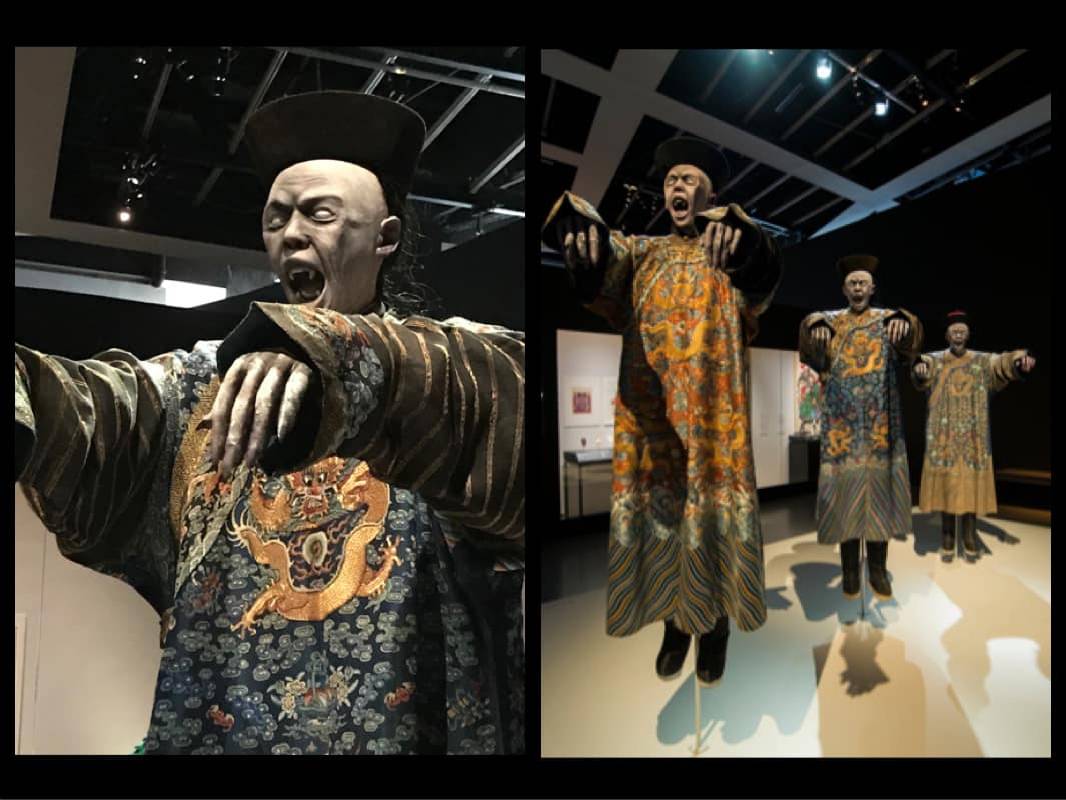臺南市立美術館
【亞洲的地獄與幽魂】

-
展期
日期:2022-06-25 ~ 2022-10-16
-
地點
70041台南市中西區忠義路二段1號
-
參展藝術家
林羿綺、侯春廷、姚瑞中、張季雅、梁廷毓、陳云、黃千倫、蔡佳葳、顏忠賢
-
法國凱布朗利博物館(musée du quai Branly - Jacques Chirac, Paris)於2018年推出之「亞洲的地獄與幽魂」特展,從傳統文物及藝術作品延伸至最新的流行文化創作,用深入淺出的方式,介紹數個世紀以來亞洲對於未知世界的恐懼與想像。透過凱布朗利博物館亞洲文明部策展人朱利安.盧梭(Julien Rousseau)的策展及敘事,臺灣觀眾可由嶄新觀點檢視自身熟悉的文化經驗。
無論對於西方還是東方世界,鬼魂皆被視為人類死亡後所存殘的強烈意識、沒有真實型態的組合物,是無法再被殺死的一種靈體。在亞洲和東方世界裡,許多鬼怪傳說、靈異故事跨越時代,通過世代口述流傳、文學記載與創作、戲劇演出、電影改編等,強化了魂魄的非自然力量,加深了詭譎陰森的氣息。在亞洲,鬼魂超越了宗教藝術的道德和解釋框架,鬼魂的形象及功能性以更世俗的流行文化和故事表達形式並進行構建,表演藝術、卡漫和電影也在很大程度上幫助亞洲的幽靈脫離無形的精神意識,具體化一個充滿奇幻的鬼怪世界。像日本的鬼魂開始對其原始意義產生反轉,當代的創作中鬼魂越來越擬人化,擁有人類的思維與情感,可以選擇是非對錯。
展覽巡迴到臺灣,加入了臺灣視角的敘述,除了受到亞洲佛道教文化影響下的地獄與幽魂,在日治時期,臺灣對鬼的形象受到日本影響,日式美學的介入,可以說明白衣長髮的女鬼形象及南投妖怪村的風行。經過傳統宮廟的民間信仰轉化,眾多傳說與文學故事開始形塑了臺灣原生鬼怪的樣貌,吃小孩子手指的虎姑婆、早期臺灣人叢林生活經驗傳說中的魔神仔等。許多鬼怪的誕生,是為了寓意歷史事件與警世提醒的作用。其實多數的鬼魂和山精水怪是人們對未知恐懼的具象,彷彿創造出一個可以歸納這些負面情感的載具,就可以找出消滅或規避它的方法。人類無法避免面臨生死,因此鬼怪是對亡者的追憶也是對生者的安慰。鬼怪的傳說,也顯露出曾經的生活樣貌與可貴的文化發展價值。
臺灣展出的作品敘述脈絡,對應法國凱布朗利博物館的展覽故事線,有臺灣當代藝術家的作品及在地鬼怪的電影海報,邀請藝術家林羿綺、侯春廷、姚瑞中、張季雅、梁廷毓、陳云、黃千倫、蔡佳葳、顏忠賢展出。並透過借展自國立臺灣歷史博物館及學甲慈濟宮之展品及文史資料,期盼呼應臺南在地的宮廟與傳說故事,在臺灣的視野下對於本土鬼怪有更豐富的見解。
Ghosts And Hells: The underworld in Asian art was presented by the musée du quai Branly - Jacques Chirac in 2018, featuring traditional artifacts, artworks, and latest pop cultural works. The exhibition takes an insightful look at fears and imaginations of the unknown world in Asia over the centuries. Through Julien Rousseau, curator of the Asian Collections at the musée du quai Branly - Jacques Chirac, visitors in Taiwan can rethink their cultural experiences from a new perspective.
In both the Western and Eastern worlds, ghosts are considered to be the strong consciousness of human beings that remains after death. They are compounds without a solid form, and spirits that cannot be killed again. In Asia and Eastern worlds, ghost legends and paranormal stories have been passed down through oral traditions, literary accounts and works, theatrical performances and film adaptations. These works reinforce the natural power of spirits and deepen the eerie atmosphere. While in Asia, ghosts go beyond the morality and framework of religious art. The imagery and functionality of ghosts are constructed in more secular forms of pop culture and storytelling. Performing arts, cartoon and comics, and films have largely decontextualized Asian spirits and ghosts from their intangible consciousness, forming a concrete fantastical world of ghosts and spirits. For instance, Japanese ghosts have reversed their original meaning, while ghosts in contemporary works are increasingly anthropomorphic, possessing human thoughts and emotions, and can decide between right and wrong.
The Taiwanese perspectives is integrated into the Taiwan edition of this exhibition. In addition to the influence of Asian Buddhist and Taoist cultures on hells and ghosts, during the Japanese rule, the image of ghosts was influenced by Japanese culture. The intervention of Japanese aesthetics explains the female ghosts with long hair and white robes and the well-liked phenomena of the monster village in Nantou. Through the transformation of folk beliefs, legends and literary works have shaped the image of Taiwan’s native ghosts and monsters, such as the tiger woman who eats children’s fingers and spirits that tagging along passer-by in forests and mountains (Mô͘-sîn-á). Many ghosts and monsters were born to symbolize historical incidents and serve as a reminder. Indeed, most of the ghosts and monsters are figurative images of people’s fear of the unknown. It is as if by creating a figure to symbolize these negative emotions, people may find ways to eliminate or avoid them. As human cannot detach from the cycle of life and death, ghosts and monsters are a reminder of the dead and a comfort to the living. The legends of ghosts and monsters also reveal the lifestyle and valuable culture of the past.
The Taiwan edition of the exhibition aims to respond to the narrative of the edition at the musée du quai Branly - Jacques Chirac and to include works by Taiwan’s contemporary artists and film posters of local ghost and monsters. The exhibition features artists including Lin Yi-chi, Hou Chun-ting, Yao Jui-chung, Chang Ki-ya, Liang Ting-yu, Chen Yun, Huang Chien-lun, Tsai Charwei, Yan Chung-hsien. Besides, the exhibition also presents collections from the National Museum of Taiwan History and Xuejia Ciji Temple, aiming to respond to the temple culture and legends of Tainan and to provide a richer knowledge of ghosts and monsters from the local perspective.
指導單位:文化部、臺南市政府
Supervisors: Ministry of Culture, Tainan City Government
主辦單位:法國凱布朗利博物館、臺南市美術館
Organizers: musée du quai Branly - Jacques Chirac, Paris, Tainan Art Museum
協辦單位:國立臺灣歷史博物館
Co-organizer: National Museum of Taiwan History
贊助單位:藍天驛站商務旅館
Sponsor: Blue Sky Business Hotel
特別感謝:法國在台協會、學甲慈濟宮、台南富華大飯店
Special thanks: BUREAU FRANÇAIS DE TAIPEI, Xuejia Tzu-chi Temple, FUWARD Hotel Tainan
推薦展覽
view all臺南市美術館
【福爾摩沙時代—臺灣近現代美術的知識啟蒙】The Formosa Era: the Intellectual Enlightenment of Early Modern and Modern Art in Taiwan
日期:2025-03-25 ~ 2025-07-06|台灣,台南市
72 days left臺南市美術館
【温度: 蒲添生x蒲浩明父子雕塑展】Thermal Echoes : A Dialogue in Sculpture of Pu Tian-Sheng & Pu Hao-Ming
日期:2025-02-25 ~ 2025-06-01|台灣,台南市
37 days left
